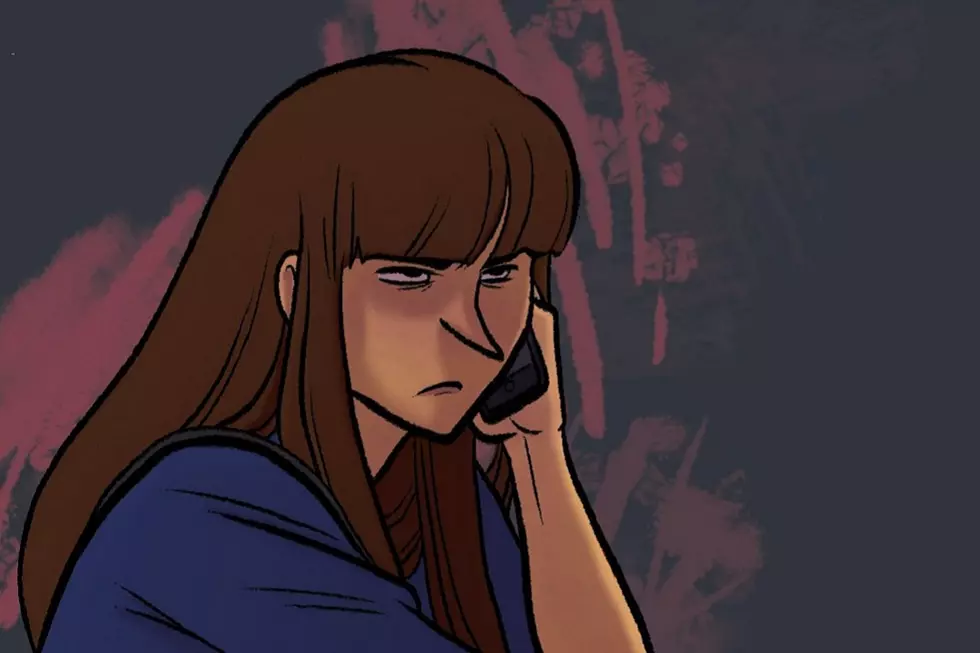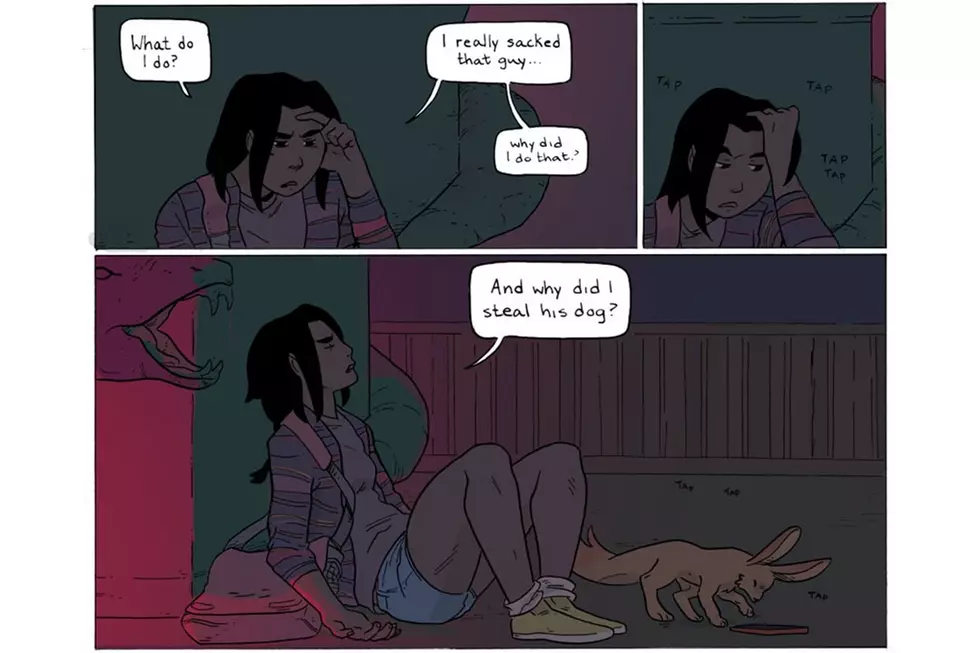
Motion in Comics: Why It Doesn’t Have to Be the Worst Thing Ever
 We've talked about motion comics before on ComicsAlliance -- mostly, to say that they are uniformly terrible, using limited animation to add wooden movement to print comics in way that brings neither the strengths of comics nor animation to the table, and whose high point thus far is facilitating an animated GIF of Wolverine eating pizza, forever.
We've talked about motion comics before on ComicsAlliance -- mostly, to say that they are uniformly terrible, using limited animation to add wooden movement to print comics in way that brings neither the strengths of comics nor animation to the table, and whose high point thus far is facilitating an animated GIF of Wolverine eating pizza, forever.
Still, the idea of animation in a comic is a tool, like any other, and just because it has primarily been used to construct horrible devices that transport readers deep, deep into the Uncanny Valley, that doesn't mean there aren't situations where it could actually be appropriate, or even uniquely enhance the experience of a comic.
Case in point: This hybrid webcomic by Vincent Giard that was recently shouted out by Scott McCloud, which uses animation within its panels to accurately (and rather elegantly) simulate the experience of being drunk.
As McCloud explains, this sort of animated GIF effect still functions in the same sort of way that comics do, with discrete moments illustrated by sequential panels, albeit in animated loops.
The best way I've come up with to explain it is that looping animation (and sound, for that matter) still communicate a static span of time. If panel 2 clearly comes after panel 1 and before panel 3, it still feels like comics, even if panel 2 is a short loop of some sort.
The point isn't whether or not we want to give it a particular label or not, but whether a given comic works as storytelling. Does it feel whole? Can we lose ourselves in the reality of the strip? And in this case, I'd say yes.
While it's easy for animation to get gimmicky or simply distracting in a webcomic or digital comic -- especially if someone is doing it simply for the sake of doing it, like when the characters in the online version of "For Better or For Worse" inexplicably started blinking -- I've seen it used well a number of times, particularly in demian5's wonderful "When I Am King" (NSFWish) and in small moments from "Dr. McNinja" and "Diesel Sweeties."
And unlike "motion comics" as they are called today, the intent with this type of hybrid is less to convert a comic into an erzatz cartoon, but rather (ideally) to enhance the effect of reading it panel to panel on the page, paper or digital. If publishers are going to continue to experiment with adding motion to their comics in the digital landscape -- and certainly, experimentation is worthy, even if it fails -- they might do better to consider this model, since at the very least it has the potential to add value to a comic rather than make it sadly less than the sum of its parts, as most modern motion comics seem doomed to do.
More From ComicsAlliance
![Five Stars: Starting At The End With Jeff Smith [Interview]](http://townsquare.media/site/622/files/2017/03/FiveStars-Smith.jpg?w=980&q=75)
![Take Me to Your Teacher: Trevor Mueller and Gabo Discuss ‘Albert the Alien’ [Webcomic Q&A]](http://townsquare.media/site/622/files/2017/03/0ALBERTVOL3_COVER_notitle-copy.jpg?w=980&q=75)
![‘Runaways’ Meets ‘Coraline’ in Cait May and Trevor Bream’s ‘Irregular’ [Webcomic Q&A]](http://townsquare.media/site/622/files/2017/03/Irregular_Banner.jpg?w=980&q=75)
![Nun Greater: Yamino and Ash Share ‘Sister Claire’ [Webcomic Q&A]](http://townsquare.media/site/622/files/2016/11/unnamed-3.png?w=980&q=75)
![When Everything Is Pink, Nothing Is Pink: Sarah Stern On Color And Creativity [Interview]](http://townsquare.media/site/622/files/2017/03/Cindersong-feat.jpg?w=980&q=75)

![Why Tillie Walden’s ‘On a Sunbeam’ Makes Outer Space A Warm Place [Webcomic Q&A]](http://townsquare.media/site/622/files/2017/03/header.jpg?w=980&q=75)



 The best way I've come up with to explain it is that looping animation (and sound, for that matter) still communicate a static span of time. If panel 2 clearly comes after panel 1 and before panel 3, it still feels like comics, even if panel 2 is a short loop of some sort.
The best way I've come up with to explain it is that looping animation (and sound, for that matter) still communicate a static span of time. If panel 2 clearly comes after panel 1 and before panel 3, it still feels like comics, even if panel 2 is a short loop of some sort.